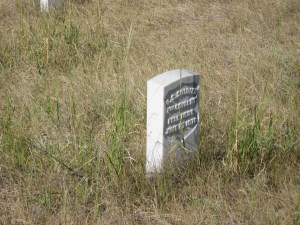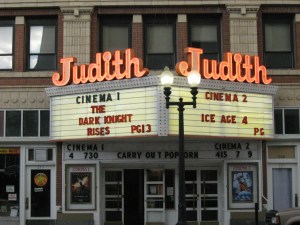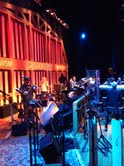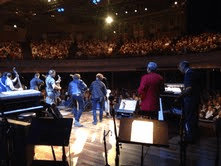We just returned from a trip to Washington and Oregon that I affectionately call the Big Northwest Adventure. It was an awesome excursion that took us to some places that I had never been and to a lot of places that my wife had never been. Each day was filled with adventures that could expand into several long blog posts. Instead of doing that, I decided to provide a brief description of the days along with my favorite picture from each.
Day 1 – Mount Rainier
Although the hotel bartender told us not to go because of the traffic, we had to see Mount Rainier. We had to wait a bit at the entrance, the traffic was not that bad. We made our way to Longmire, where we hiked a trail to nowhere. We saw some poop along the path that my wife Necole worried belonged to a bear. Unbeknownst to me, she was planning our escape from the bear for the rest of the hike.
After that hike, we walked across a river of snowmelt that led to my favorite picture from that day.
On the way back from Mount Rainier, we stopped at Chipotle. That meal made us feel like the fictional bear must have felt on the side of the trail.
Day 2 – Seattle
On vacation, I would rather see small towns that big cities. However, we were staying in downtown Seattle, a city that we had never visited. That meant that we needed to spend some time there. We checked out the University of Washington because my stepdaughter has shown interest in going to school there.
We also went to Pike Place Market, a famous landmark where people can buy fruits, vegetables, fresh fish, cheeses, flowers and trinkets. I took a photograph on one colorful stand.
We had a great meal but missed out on getting coffee at the original Starbucks because the line was a little long.
Oh yeah, we also had dinner at Aqua, a place the concierge recommended. When we saw one entrée for $142, we lost our appetite.
Day 3 – Olympic National Park
We got up early to begin the road trip portion of the adventure and immediately grew concerned. GPS was taking us to the ferry, which is not what I had planned. It was not what Necole had planned, either. She was not sure about getting on a three-hour boat ride. After all, we had seen Gilligan’s Island. We reconfigured the GPS and made it on dry land.
After some hits and misses on my part, we finally made it to Hurricane Ridge outside the town of Port Angeles, Washington. The ridge has the best hike in the park. On a clear day, you can see forever. Yes, I stole that line. Anyway, it was not clear on the day we hike, which may have been a good thing.
Remember when I wrote that my wife worried about seeing a bear after we saw poop on the trail? Well, we saw a huge bear along this hike. It was playing around in a foggy meadow. If the sky had been clear, then we could have seen its true size. At that point, we may have frozen in place rather than casually sauntering back the way we came. I did not get a picture of the bear, but I got a picture of this.
We spent that night at Lake Crescent Lodge in another part of the park. I think we could have spent a few days in that peace and tranquility.
Day 4 – Olympic National Park
This day was a continuation of our visit to the park. Yeah, it is that big. We hiked to a waterfall. We had lunch in Forks, Washington. Necole said that this town was the setting of the Twilight series. I have never read those books or seen those movies, but I know that is cool.
After lunch, we headed to the beach. Do not let Necole tell you that I never want to go to the beach. I have always wanted to go to this beach, and it was my highlight of the trip. Ruby Beach was everything that I expected.
It was certainly better than the meal we had that night. We stopped at an interstate hotel and asked for a good place to eat. The restaurant they recommended certainly did not have a $142 entrée.
Day 5 – Mount St. Helens
From childhood, I can remember the coverage of Mount St. Helens. The weeks of rumblings. Harry Truman, who would not leave his home. The eruption. The aftermath. It is something that I will never forget. It is also a place that I wanted Necole to see.
Several years ago, I visited Mount St. Helens with my dad, my brother and my nephews, and it was stunning to see what was left of a mountain that was once covered with snow and dense forest. It is truly a place where the destructive force of nature can be visualized.
From there, we drove through Portland and made our way to Oregon Wine Country in the Willamette Valley. We also made it to The Allison Inn, our lodging for the next couple of nights. It was amazing.
Day 6 – Vineyards
We hired a driver to take us to a few wineries. The first, Archery Summit, was recommended by a friend. The second winery is where I took my favorite picture of the entire trip.
The third was Utopia, a small family owned operation. We had a great conversation with the owner and his daughter, who is a History major. They told us about how they got into this business at that location. We also talked about music. It was good to see that the growing of grapes is not just done my wealthy investment bankers and corporations.
Necole chose The Painted Lady, a famous local restaurant, for dinner. I can only describe it by saying that it is similar to The Catbird Seat in Nashville. Unfortunately, my wife is not a fan of The Catbird Seat. It is a long and winding story that I will not get into. Just know that she likes to bring up the night that I took her there when we were dating. That will probably stop because I can now bring up the night that she took me to The Painted Lady. If you want to know about The Catbird Seat experience, then you can click here.
Day 7 – More Vineyards
We visited more vineyards, but I did not take good photographs. I should have because they were beautiful settings. However, this was the day that our adventure started to wind down. After a few stops, we drove back to Seattle for a night near the airport. You know things are becoming more normal when you have dinner at Jack in the Box. The next day would be a flight home
The Big Northwest Adventure was great, but the real world was waiting. Here is the thing. The real world is pretty great, too.



























